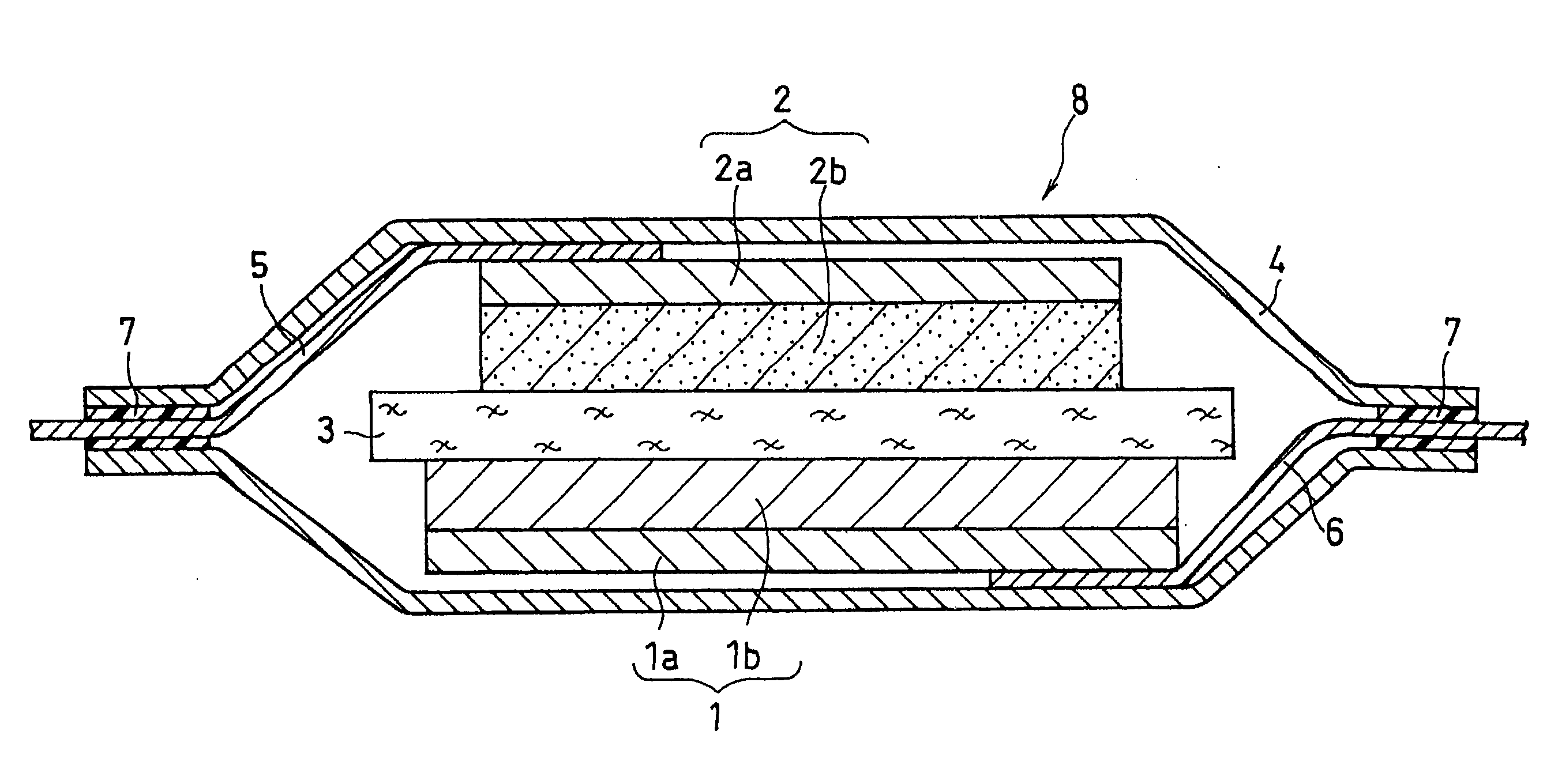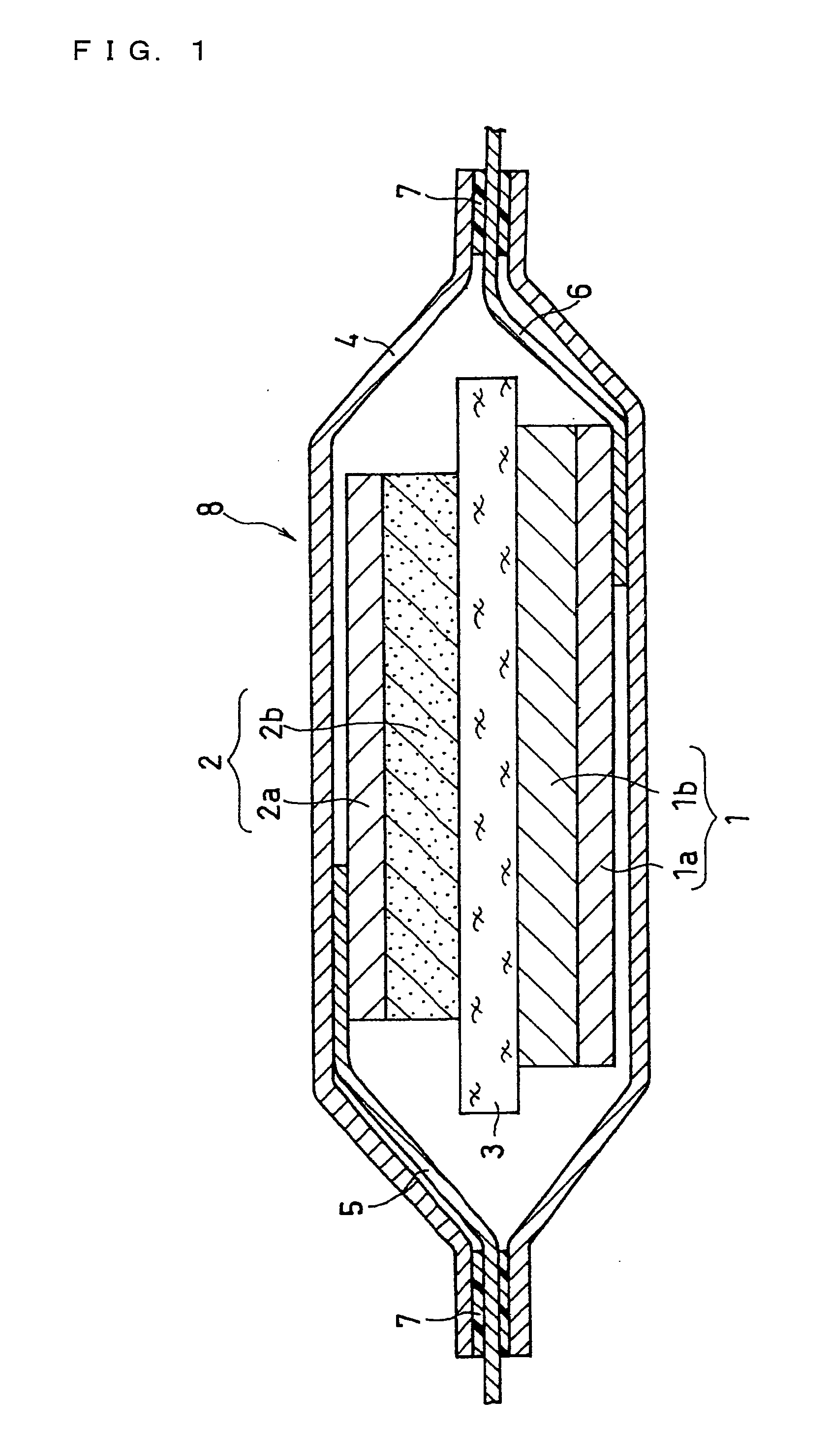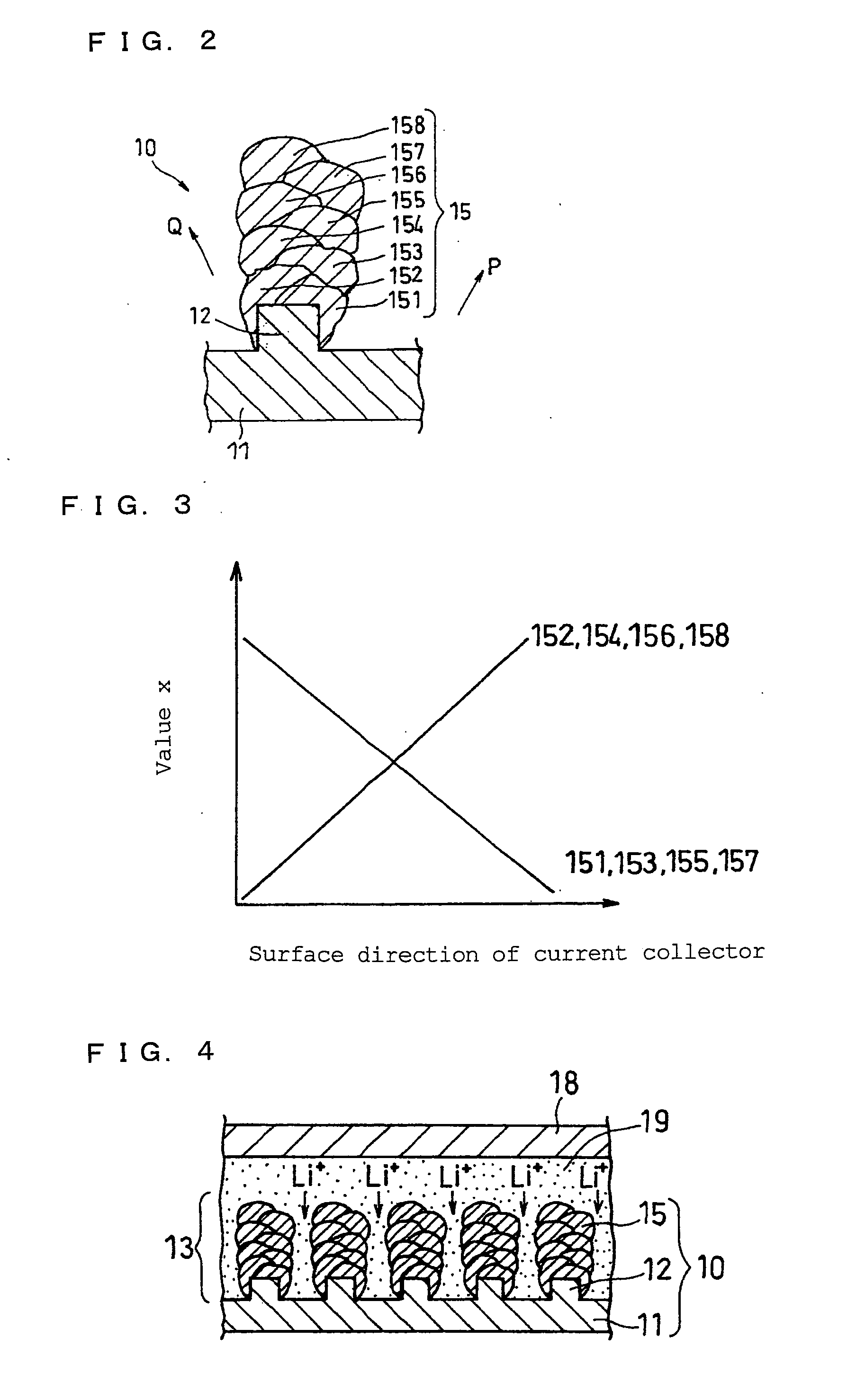Electrode for electrochemical device and electrochemical device using the same
a technology of electrochemical devices and electrodes, applied in the direction of hybrid capacitor terminals, electrolytic capacitors, cell components, etc., can solve the problems of deteriorating safety, reliability, and the capacity of negative electrode active materials that cannot exceed the theoretical capacity density of carbon materials, and achieve excellent high-rate characteristic and low-temperature characteristic, superior safety, and high-capacity
- Summary
- Abstract
- Description
- Claims
- Application Information
AI Technical Summary
Benefits of technology
Problems solved by technology
Method used
Image
Examples
embodiment 1
[0103]The negative electrode for the non-aqueous electrolyte secondary battery according to this embodiment will be described with reference to FIG. 2. FIG. 2 is a vertical sectional view showing an essential portion of the negative electrode for the non-aqueous electrolyte secondary battery according to the present embodiment.
[0104]As shown in FIG. 2, a negative electrode 10 comprises a negative electrode current collector 11 having a projecting portion 12 on one surface thereof and a columnar particle 15 formed on the projecting portion 12. The columnar particle 15 comprises a stack of eight particle layers 151, 152, 153, 154, 155, 156, 157 and 158.
[0105]The particle layers 151, 153, 155 and 157 at steps of odd numbers (first, third, fifth and seventh steps) counted from the bottom portion of the columnar particle 15 are inclined to a first direction P with respect to the normal direction of the current collector. The particle layers 152, 154, 156 and 158 at steps of even numbers ...
embodiment 2
[0135]An electrode for a non-aqueous electrolyte secondary battery according to this embodiment will be described with reference to FIG. 14. FIG. 14 is a vertical sectional view of an essential portion of a negative electrode according to this embodiment.
[0136]As shown in FIG. 14, an electrode 100 comprises a negative electrode current collector 111, and a negative electrode active material layer 115 covering the surface of the negative electrode current collector 111. As the negative electrode active material, SiOx (0115 does not have a void portion to which a part of the current collector 111 is exposed but covers densely the surface of the current collector 111. On the surface of the negative electrode active material layer 115, rough portions 116 are formed. It is preferable that this negative electrode active material layer 115 has a BET specific surface area of 5 m2 / g or more and 8 m2 / g or less. It is more preferable that the negative electrode active material 115 has a BET sp...
embodiment 3
[0142]A negative electrode for a non-aqueous electrolyte secondary battery according to this embodiment will be described with reference to FIG. 15. FIG. 15 is a vertical sectional view showing an essential portion of the negative electrode according to this embodiment.
[0143]As shown in FIG. 15, a negative electrode 200 has a columnar particle 215 formed on a projecting portion 212 on the surface of the current collector 211 such that it inclines with respect to the normal direction of the current collector 211. The columnar particle 215 has a plurality of projecting bodies 216 formed discretely on the surface of the side forming an obtuse angle with the surface direction of the current collector 211. The plurality of projecting bodies 216 are scattered on the surface of the current collector without overlapping each other. More specifically, the plurality of projecting bodies 216 are formed discretely on the surface of the side forming an obtuse angle θ1 with the surface direction ...
PUM
| Property | Measurement | Unit |
|---|---|---|
| BET specific surface area | aaaaa | aaaaa |
| BET specific surface area | aaaaa | aaaaa |
| BET specific surface area | aaaaa | aaaaa |
Abstract
Description
Claims
Application Information
 Login to View More
Login to View More - R&D
- Intellectual Property
- Life Sciences
- Materials
- Tech Scout
- Unparalleled Data Quality
- Higher Quality Content
- 60% Fewer Hallucinations
Browse by: Latest US Patents, China's latest patents, Technical Efficacy Thesaurus, Application Domain, Technology Topic, Popular Technical Reports.
© 2025 PatSnap. All rights reserved.Legal|Privacy policy|Modern Slavery Act Transparency Statement|Sitemap|About US| Contact US: help@patsnap.com



